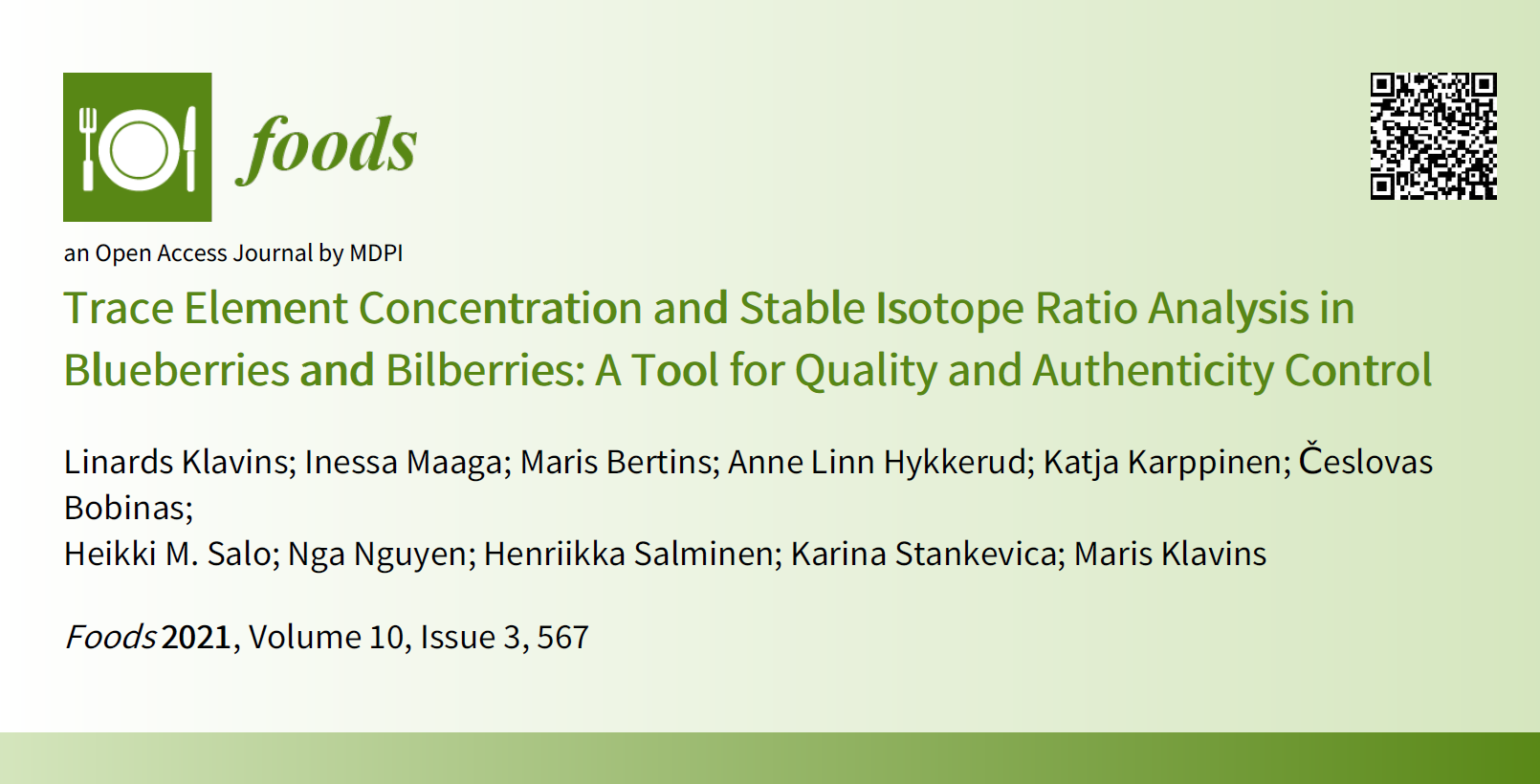Vaccinium genus berries—wild bilberries (Vaccinium myrtillus L.) and cultivated highbush blueberries (Vaccinium corymbosum L.)—are consumed worldwide, and their consumption has a trend of stable increase. Thus, considering their wide use in ethnomedicine, for juice and jam production, as functional food, as well as their use in preparations of extracts which have application potential in pharmaceutical and cosmetics industries, studies regarding the composition of these berries are of special importance. The aim of this study is to characterise the elemental and isotopic composition, as well as variation in element concentration in bilberries gathered from different sites in Northern Europe and in commercially available blueberry samples from across the World. Furthermore, our aim was to develop tools for authenticity and quality control of these berries. The elemental composition of berries was analysed using inductively coupled plasma with optical emission detection (ICP-OED), while isotope ratio mass spectrometry (IRMS) was used for the determination of isotope ratio values. The results demonstrated detectable differences between macro- and microelement values in bilberries. IRMS analysis of blueberries revealed significant differences in isotope ratios based on the place of origin, indicating the possibility to use this analytical method for authenticity testing. In none of the samples, pollution was detected, even though there were indications of different growth conditions and geochemical differences affecting bilberry composition.
Keywords: blueberries; trace elements; heavy metals; light stable isotope ratio; pollution; authenticity; bilberries

